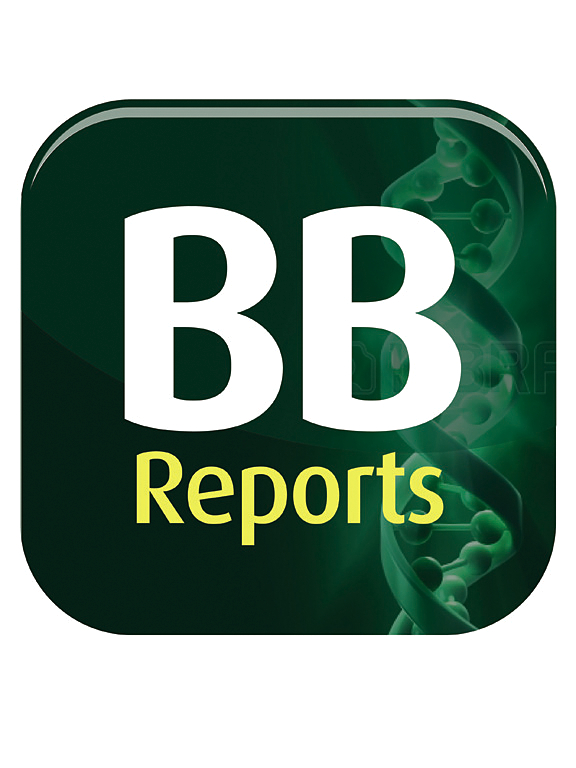New insights on Drug's design against candidiasis on the fructose biphosphate aldolase (Fba1) and the pyruvate kinase (Pk) of Candida glabrata
IF 2.3
Q3 BIOCHEMISTRY & MOLECULAR BIOLOGY
引用次数: 0
Abstract
Candida glabrata is well known to be the second most common cause of invasive candidiasis (IC) within immunocompromised and hospitalized patients, after Candida albicans. Candida species adhere to host cells and implanted medical devices by means of cell wall proteins (CWP), of which the moonlight proteins have recently been described and are of particular importance because they have been identified in response to various virulence and/or pathogenic factors. Among the identified CWP moonlights, fructose-bisphosphate aldolase (Fba1) and pyruvate kinase (Pk) have been observed to confer immune protection against C. albicans and C. glabrata in a mouse model. In other pathogens, these proteins have been used as therapeutic targets. As the treatment of IC has been based on four main drug classes for decades, the Candida species has developed resistance mechanisms. In addition, C. glabrata has an innate resistance to the antifungal drugs, which makes the treatment of IC by this pathogen difficult. It is essential to have new formulations that allow new treatments of patients affected by this pathogen, so new targets with antifungal activity is of primary necessity. For this purpose, in this study we propose the moonlight CWPs Fba1 and Pk as novel candidates for drug targets. Using structural modeling, virtual database analysis, in vitro susceptibility tests, and enzymatic activity assays, we propose the use of new chemical molecules as potential antifungals against C. glabrata. In this sense, we chose to evaluate three chemical molecules (FE1, FE2 and FE3), whose chemical structure gives them the possible molecular leadership against Fba1 and Pk. Through the susceptibility experiments, our data showed that of the three molecules evaluated, FE1 was the best ligand against C. glabrata. We also found that Fba1 and Pk of C. glabrata had the characteristics of therapeutic targets against IC. In the present work, considering a group of tools in silico and experiments in vitro it was possible to identify the best candidate molecule as a possible antifungal for the treatment of IC caused by C. glabrata.

果糖二磷酸醛缩酶(Fba1)和丙酮酸激酶(Pk)抗念珠菌病药物设计的新见解
众所周知,在免疫功能低下和住院患者中,光秃念珠菌是侵袭性念珠菌病(IC)的第二大常见原因,仅次于白色念珠菌。念珠菌通过细胞壁蛋白(CWP)附着在宿主细胞和植入的医疗器械上,其中月光蛋白最近被描述,并且特别重要,因为它们已被确定为对各种毒力和/或致病因素作出反应。在已确定的CWP月光中,在小鼠模型中观察到果糖-二磷酸醛dolase (Fba1)和丙酮酸激酶(Pk)具有对白色念珠菌和光斑念珠菌的免疫保护作用。在其他病原体中,这些蛋白质已被用作治疗靶点。几十年来,由于IC的治疗一直基于四种主要药物类别,念珠菌物种已经形成了耐药机制。此外,青霉对抗真菌药物具有先天抗性,这使得该病原体对IC的治疗变得困难。必须有新的制剂,使受这种病原体影响的患者获得新的治疗方法,因此具有抗真菌活性的新靶点是首要需要的。为此,在本研究中,我们提出了月光CWPs Fba1和Pk作为药物靶点的新候选物。通过结构建模、虚拟数据库分析、体外药敏试验和酶活性分析,我们提出使用新的化学分子作为潜在的抗真菌药物。因此,我们选择了FE1、FE2和FE3三种化学分子进行评价,这三种化学分子的化学结构使它们可能具有对Fba1和Pk的分子领导作用。通过敏感性实验,我们的数据表明,在评价的三种分子中,FE1是对C. glabrata的最佳配体。我们还发现,光棘草的Fba1和Pk具有治疗IC的靶点特征。在本工作中,考虑到一系列的硅和体外实验工具,有可能确定最佳的候选分子作为治疗由光棘草引起的IC的可能的抗真菌药物。
本文章由计算机程序翻译,如有差异,请以英文原文为准。
求助全文
约1分钟内获得全文
求助全文
来源期刊

Biochemistry and Biophysics Reports
Biochemistry, Genetics and Molecular Biology-Biophysics
CiteScore
4.60
自引率
0.00%
发文量
191
审稿时长
59 days
期刊介绍:
Open access, online only, peer-reviewed international journal in the Life Sciences, established in 2014 Biochemistry and Biophysics Reports (BB Reports) publishes original research in all aspects of Biochemistry, Biophysics and related areas like Molecular and Cell Biology. BB Reports welcomes solid though more preliminary, descriptive and small scale results if they have the potential to stimulate and/or contribute to future research, leading to new insights or hypothesis. Primary criteria for acceptance is that the work is original, scientifically and technically sound and provides valuable knowledge to life sciences research. We strongly believe all results deserve to be published and documented for the advancement of science. BB Reports specifically appreciates receiving reports on: Negative results, Replication studies, Reanalysis of previous datasets.
 求助内容:
求助内容: 应助结果提醒方式:
应助结果提醒方式:


